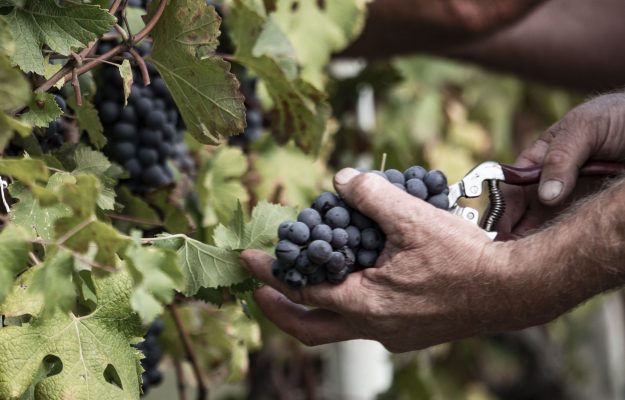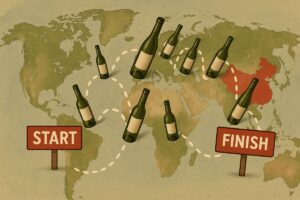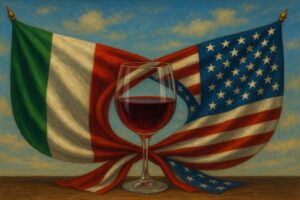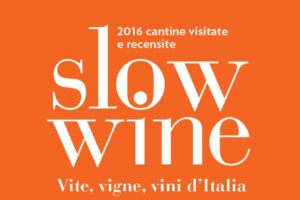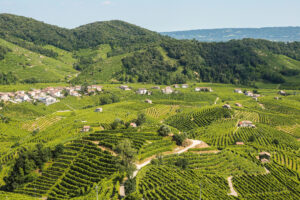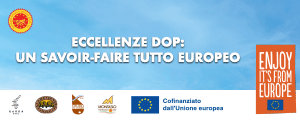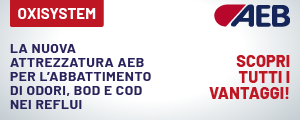Organic wine trends, changes in the last two years, development prospects and possibilities in international markets: these are the focuses of “Organic Wine: Trends & Challenges”, a webinar promoted by FederBio and AssoBio (together with Veronafiere and Vinitaly), and curated by Nomisma-Wine Monitor, which presented the results of the study “Positioning and development prospects of organic wine in Italy and on international markets”. Taking stock of the weight of organic wine on the Italian scene is Roberto Zanoni, president of AssoBio, who recalls how “with 70,000 producers and 10,000 processing companies, Italy is the leader in Europe, and ranks first in the world in terms of exports together with the United States, with 2.9 billion euros, equal to 6 percent of total national agri-food exports. Per capita consumption, however, amounts to only 64 euros a year, compared with 180 euros in Germany and France and 350 euros in Switzerland and Denmark, so there is still much to grow. The wine sector, in the organic world, excels, both in terms of increasing hectares under vine and exports. The concept of sustainability, combined with indigenous varieties and the quality of production, makes - Zanoni continues - Italian organic viticulture international excellence, but also an example of innovation and protection of territories, with 19% of the areas planted with vines currently converted to organic. From the consumption front, on the other hand, comes the demand for a wider and deeper offer, but also the need for more information on organic wines, especially among those (54%) who have never consumed any”.
Putting into number the production and consumption trends, in Italy and abroad, are Silvia Zucconi and Emanuele Di Faustino, who edited the Nomisma study “Positioning and development prospects of organic wine in Italy and international markets”. From which emerges, first of all, the context, which is that of a country, Italy, in which wine consumption in 2021 has reached 23.2 million hectoliters, for 39.2 liters per capita, resuming a growth trend that began in 2014 (+1.8 percent average annual growth until 2019) and was interrupted in 2020 due to the pandemic. Today, Italy is the third largest market in the world in terms of overall consumption, with 87 percent of Italians between 18 and 65 years old having consumed wine at least once in the past 12 months. Another interesting trend concerns channels: in 2021, 73% of consumption went through the off-trade channel, and 27% through the away-from-home channel.
Again starting from the general context, what are the characteristics most sought after in an agri-food product by consumers? On a scale of greater or lesser importance, in first place is Italian style (43% consider it a decidedly important factor), followed by sustainability (29%), then organic (27%), low price (25%), PDO/PGI (23%) and well-known brand (15%). When narrowing the field to wine, however, the most important characteristics for consumers are different, and they reward territoriality: provenance from a specific territory (23%), presence of the Doc/Docg/Igt brand (20%), well-known brand/cantine (13%), presence of promotions/offers (13%), environmental and social sustainability of the product (7%), sustainable packaging (7%), presence of the organic brand (6%), low price (7%) and pretty/attractive packaging (4%).
But what is meant by “sustainable wine”? 72% indicate environmental sustainability actions: “produced respecting the environment” (26%), “produced by minimizing the use of fertilizers and pesticides” (16%), “has packaging with less environmental impact” (11%), “safeguards biodiversity” (10%), “is organic” (9%). On the other hand, 27 percent focus on socio-economic sustainability: “it is produced respecting the cultural heritage and landscape of an area” (14%), “it is produced respecting workers’ rights” (7%), “it guarantees the economic development of the producing company” (6%). To understand the penetration rate of organic wine in Italy, on the other hand, consumers were asked if they had found and purchased, at the restaurant or on the shelf, a wine with the logo (the green leaf, ed.) of organic wine on the label in the last 12 months: “yes and I bought it” (51%), “yes but I did not buy it” (19%), “no, but I would be interested” (8%), “no, but I am not interested” (3%), “I did not pay attention to it” (19%). However, one of the most important aspects is the growth of the organic wine consumer base from 2% in 2013 to 51% in 2022, but in food it is much higher (89%), suggesting huge potential for growth.
But where is this consumption concentrated? 55% only at home, 27% only away from home, 18% both at home and away from home. The prevailing purchasing channels are hyper and supermarkets (46%), wine shops (19%) and wineries in direct sales (15%). To increase organic wine consumption, the most relevant factors according to consumers are: more affordable price (25%), higher quality (22%), wider assortment of organic wines (15%), major brands introducing organic wines (10%), presence in stores of shelves dedicated to organic wines (7%) and clearer information (8%). In parallel, the reasons that keep 48% of wine consumers away from organic production are: it costs too much (23%), poor advertising/promotion in stores (20%), it is not there in the stores/restaurants I frequent (16%), I do not find any difference compared to non-organic wine (12%), I do not know the benefits (12%), and in general I do not trust the guarantees offered by the organic brand (8%). Assortment and knowledge about the product are, therefore, the two factors to work on to grow.
Among nonconsumers, the factors that might bring them closer to organic wines are: more affordable price (30%), possibility of tasting in the stores I frequent (14%), presence of more information (13%), higher quality (12%), and the different aspects related to the assortment (which added together are worth 22%). The result is then that 37% of organic wine consumers would be willing to pay 5% more for a bottle of organic wine, 42% 5% to 10% more, 8% more than 10% more, and 14% say they are not willing to spend more. Percentages that plummet among those who do not drink organic wine: 27% would spend 5% more, 18% between 5% and 10% more, none over 10% more, and as many as 55% would not be willing to pay more at all.
Turning to organic wine trends in the Italian large-scale retail trade, sales in hyper, super, and discount stores touched 46.5 million euros in 2021 (+3.7% over 2020, compared to +3.8 % for conventional wine), accounting for 1.7% of total wine. Still and sparkling wines are worth 40.1 million euros (86% of total organic wines), with PDO wines growing by 7.5%, generic wines by as much as 26% and PGIs by only 0.1%. Organic sparkling wines, on the other hand, are worth 6.4 million euros, 14% of total wines sold in large-scale distribution, with sweet Charmat (Asti) growing 58% and classic method (Franciacorta and Trentodoc) 42.3%. Online sales of organic wines are worth 895,000 euros (+13.4% over 2020), and represent 1.9% of total wine. On e-commerce channels (large-scale retail stores and Amazon, but not pure players such as Tannico, Callmewine and others, which intercept more than 80% of online wine sales) the average price of organic wines is 8.8 euros per liter, compared to 6.7 euros per liter for conventional wines. On the shelf, however, the average price of organic wines falls to 8 euros per liter, compared to 5.9 euros per liter for conventional wine.
Looking at the regional distribution of organic wine sales (exclusively still and sparkling) in Gdo, at the top is Sicily, with 7.8 million euros (accounting for 6% of total Sicilian wine sales), followed by Abruzzo (6.3 million euros), Tuscany (4.7 million euros), Marche (3.9 million euros) and Piedmont (2.7 million euros), which together are worth 74% of total sales. In the top ten denominations (and types, ed.), by value, of organic sales in large-scale distribution, Prosecco (5.1 million euros) leads the way, followed by Nero d’Avola (2.9 million euros), Montepulciano d’Abruzzo (2.6 million euros), Pecorino (1.9 million euros), Chianti (1.7 million euros), Grillo (1.7 million euros), Passerina (1.6 million euros), Langhe Arneis (1.6 million euros), Cerasuolo (0.7 million euros) and Trebbiano d’Abruzzo (0.7 million euros).
Before looking at trends and possibilities in international markets for Italian organic wine, it is useful to broaden the horizon. Worldwide, organically conducted areas under vines account for 7.3% of the total (506,400 hectares), up 132% between 2010 and 2020. In Europe, the percentage is growing to 12.1 percent (397,700 hectares, up 119 percent between 2010 and 2020), and in Italy, organic areas under vines account for as much as 17.8% of the total, with 117,400 hectares, up 125% in ten years. Our main competitors, France and Spain, are not to be outdone: the incidence of organic vine area on total hectares is 18% for French rows and 14% for Spanish vineyards, growing by 171% and 129% respectively between 2010 and 2020.
But how are consumers around the world doing? The percentage of those who think that organic wines will be among the consumption trends for the next 2/3 years is very varied: it ranges from 46% of US consumers to 39% of Uk consumers, from 25% of French to 21% of Italians, from 35% of Chinese to 32% of Australians. It is precisely the United States, thus, that once again confirms itself as the reference market, especially when it comes to Italian wine: for the wine category, in fact, the Italian origin is very important, as for no other product category, and the fact that it is organic is just one more reason to push the American consumer to purchase it. It is a lever that, evidently, Italian wine as a whole must exploit, because in the U.S. market 62% of the population between 21 and 65 years old consumes wine, and 33% consume organic wine: that is 65 million consumers, and for 20% of them organic is the first choice. Overall consumption, it is worth remembering, is declining to 29.6 million hectoliters in 2021 (-3.5% over 2019, the last pre-pandemic figure), or 9 liters per capita. In the breakdown by states, California is at the top (worth 17% of consumption), followed by Florida (9%), New York (8%), Texas (7%) and Illinois (4%): together they are worth 45% of total consumption.
As mentioned, opportunities arise from the fact that for 63% of American wine lovers it is very important that organic wine is of Italian origin, and 18% of Americans point to wine as the organic product made in Italy with the greatest potential. Currently, the market share of Italian organic wines is 34% of imported still wines (compared to 28% in France and 10% in New Zealand) and 33% of imported sparkling wines (compared to 59% in France and 7% in Spain). But it is not only the U.S. among the markets to target, because Canada also offers enormous potential. It is now the fifth largest market for Italian wine exports, where 72% of consumers have drunk wine at least once in the last year (24% habitually), 32% consume organic wine and 11% consider organic wine their first choice. Here, per capita wine consumption in 2021 amounted to 16 liters per person, much more than the U.S. average, with Italy having a 21% share of the market. Moreover, in the perception of Canadian consumers, Italian wine, in terms of quality, is second only to French wine.
Copyright © 2000/2025
Contatti: info@winenews.it
Seguici anche su Twitter: @WineNewsIt
Seguici anche su Facebook: @winenewsit
Questo articolo è tratto dall'archivio di WineNews - Tutti i diritti riservati - Copyright © 2000/2025










